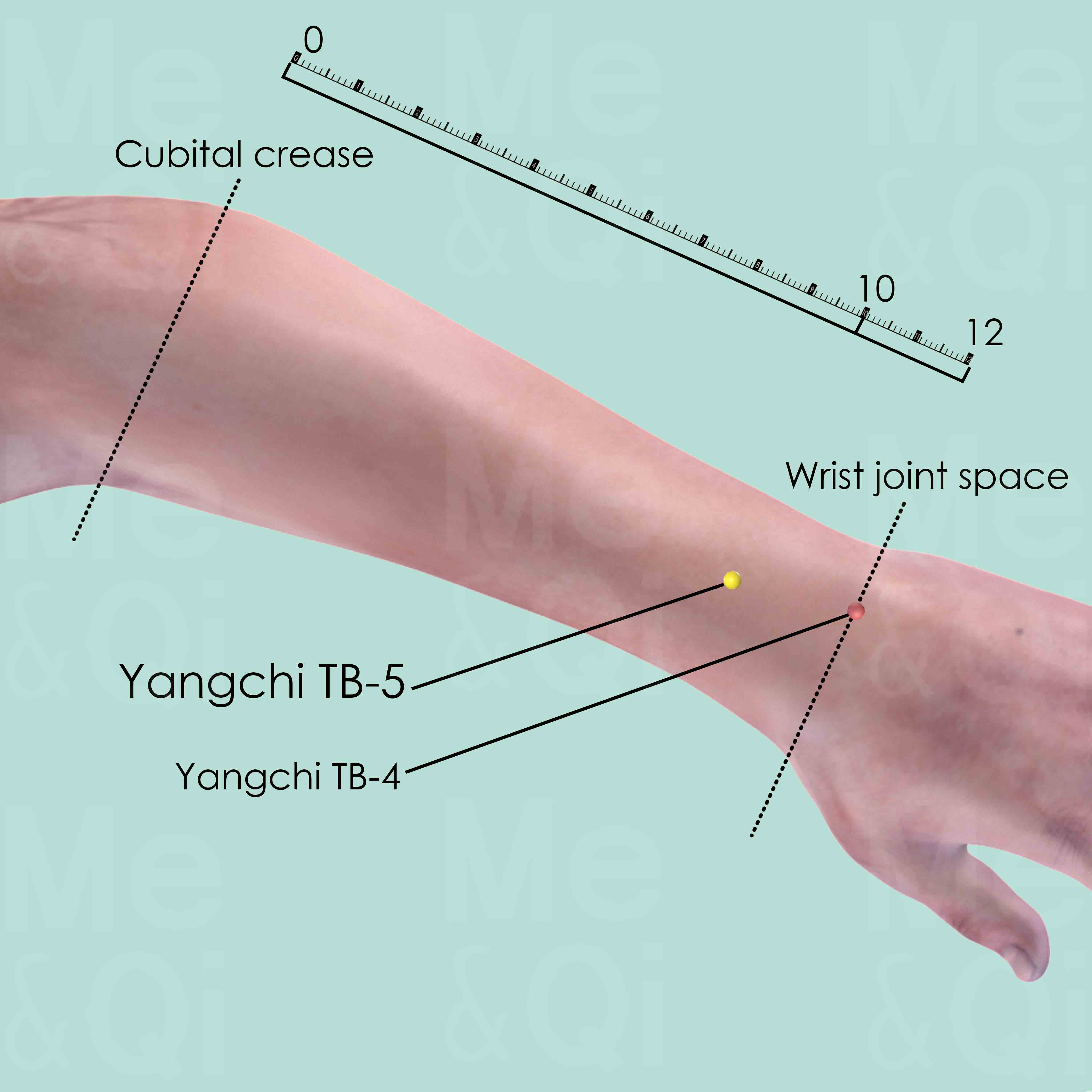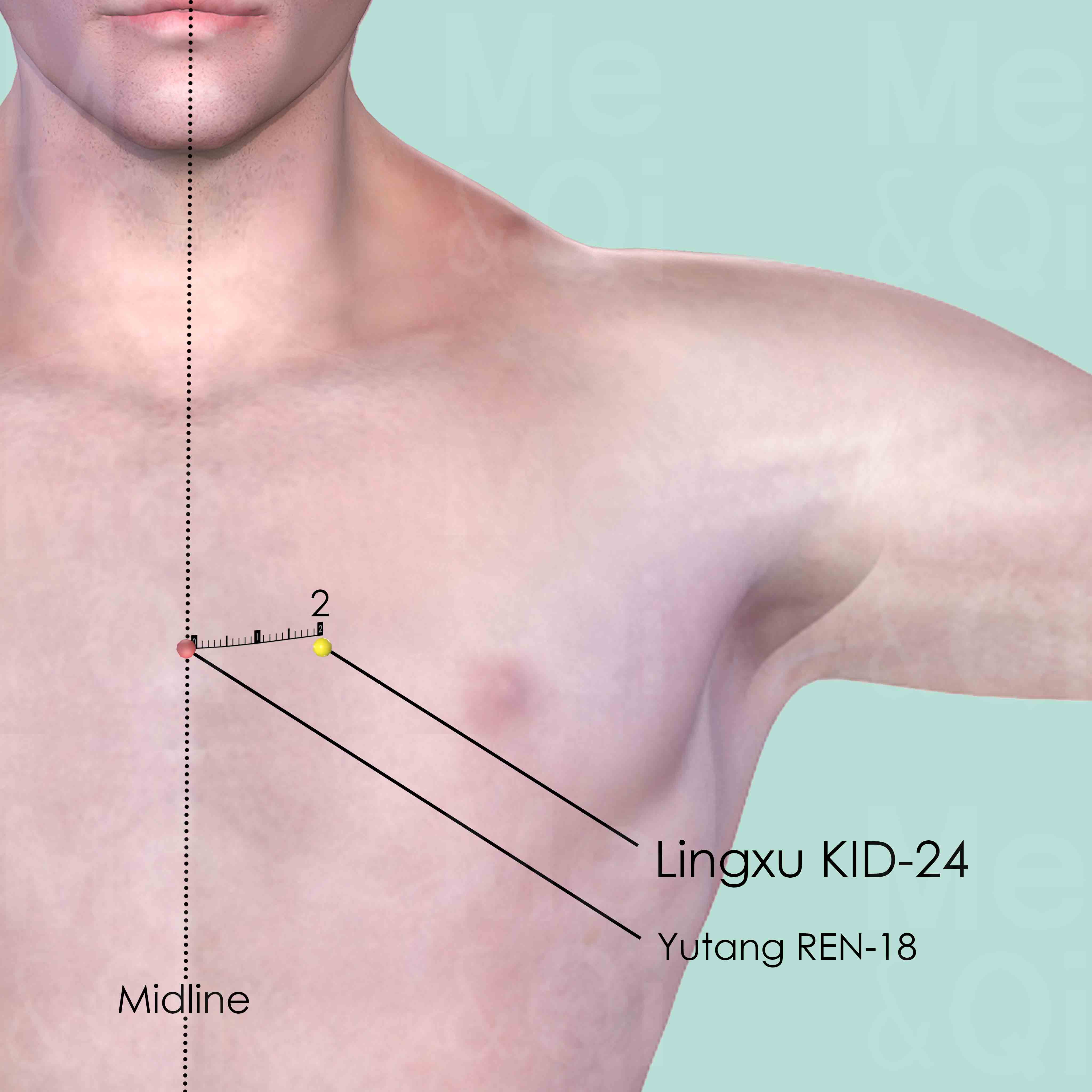Hypochondriac Painaccording to TCM
Symptom families: Chest & Hypochondriac Pain and Distention, Chest Swelling, Congestion, and Physical Changes
Did you mean? Rib Pain
Root Causes of Hypochondriac Pain in TCM
Explore below more details about what might cause Hypochondriac pain according to TCM.
- By Syndrome
- By Organ
- Heat
- Qi Stagnation
- Dampness
- Blood Stasis
- Qi Rebellion
- Cold
- View More Causes
- Liver
- Gallbladder
- Pericardium
- Spleen
- Stomach
- View More Organs
Heat
In TCM "Heat" signifies an excess of Yang energy, leading to an imbalance where heat predominates over the body's cool Yin aspects. This condition is metaphorically akin to an internal over-heating. Symptoms indicative of Heat can include feelings of warmth, fever, sweating, irritability, red face, thirst with a preference for cold drinks, and a rapid pulse. The tongue may appear red with a yellow coating. Unlike the common interpretation of heat in terms of temperature, in TCM, it represents a state of hyperactivity or inflammation in the body.... see more
Heat Patterns That Can Lead to Hypochondriac Pain
Common Symptoms: Bitter Taste In The Mouth Irritability Dizziness Hypochondriac Distention Dry Mouth Without Desire To Drink Feeling Of Heaviness Alternating Sensation Of Hot And Cold Nausea
| Pattern Name | Relevant Symptoms | Relevant Formulas |
|---|---|---|
| Damp-Heat in the Gallbladder | Hypochondrial pain, Hypochondriac pain, Hypochondriac distention, Nausea or vomiting, Fat malabsorption, Dull yellow complexion, Scanty and dark urine, Fever, Dry mouth without desire to drink, Bitter taste in the mouth, Dizziness, Tinnitus, Irritability, Feeling of heaviness, Limb numbness, Foot edema, Alternating diarrhea and constipation, Alternating sensation of hot and cold, Yellow sclera... see more | Yin Chen Hao Tang |
| Gallbladder Heat | Hypochondrial pain, Alternating sensation of hot and cold, Bitter taste in the mouth, Thirst, Dry throat, Hypochondriac pain, Nausea, Upper abdominal fullness... see more | Hao Qin Qing Dan Tang |
| Obstruction Of the Spleen By Dampness with Liver Qi Stagnation | Hypochondrial pain, Upper abdominal oppression, Nausea, Lack of appetite, Diarrhea, Feeling of heaviness, Dry mouth without desire to drink, Dull shallow face, Irritability, Upper abdominal distension, Hypochondriac distention, Hypochondriac pain... see more | Ping Wei San | Dang Gui Shao Yao San |
| Heat Excess in the Liver or Gallbladder | Fixed pain in the hypochondria, Hypochondriac pain, Headaches, Dizziness, Red and irritated eyes, Hearing loss, Ear swelling, Bitter taste in the mouth, Irritability, Painful urination, Swollen and itchy external genitalia... see more | Long Dan Xie Gan Tang |
Qi Stagnation
Qi Stagnation in TCM is like having a traffic jam in your body's energy system. Qi, the vital life force that flows through your body, is supposed to move smoothly to maintain health and balance. But with Qi Stagnation, this flow gets blocked or slowed down, like cars stuck on a highway. This can lead to symptoms like feeling stressed, emotional mood swings, and physical discomfort, often described as a feeling of fullness or tightness, especially in the chest or abdomen. It's as though the body's internal energy circulation is disrupted, causing various issues. TCM sees this as an energy flow problem, different from modern medicine's focus on specific physiological processes.... see more
Qi Stagnation Patterns That Can Lead to Hypochondriac Pain
Common Symptoms: Irritability Lack Of Appetite General Fullness Depression Mood Swings Sighing Irregular Periods Breast Engorgement
| Pattern Name | Relevant Symptoms | Relevant Formulas |
|---|---|---|
| Qi Stagnation | Fixed pain in the hypochondria, General fullness, Moving pain, Depression, Irritability, Mood swings, Sighing | Yue Ju Wan |
| Liver Qi Stagnation | Hypochondriac pain, Hypochondriac distention, Chest distension, Upper abdominal distension, Abdominal distention, Sighing, Melancholia, Depression, Mood swings, Irregular periods, Globus sensation, Pre menstrual breast distension, Pre menstrual tension, Anxiety, Anger... see more | Yue Ju Wan | Xiao Yao San | Jia Wei Xiao Yao San | Chai Hu Shu Gan San | Yi Guan Jian |
| Obstruction Of the Spleen By Dampness with Liver Qi Stagnation | Hypochondrial pain, Upper abdominal oppression, Nausea, Lack of appetite, Diarrhea, Feeling of heaviness, Dry mouth without desire to drink, Dull shallow face, Irritability, Upper abdominal distension, Hypochondriac distention, Hypochondriac pain... see more | Ping Wei San | Dang Gui Shao Yao San |
Dampness
"Dampness" in TCM is a concept that describes a pattern of disharmony where the body accumulates excess moisture. Imagine the heavy, sticky feeling you get on a very humid day; that's similar to what dampness feels like internally. It can manifest as a sense of heaviness, bloating, sluggishness, or even a foggy mind. This condition is often thought to arise from environmental factors like living in a damp place, dietary habits that promote moisture in the body, or internal imbalances that hinder the body's ability to process fluids properly. In TCM, dampness can obstruct the normal flow of energy and fluids in the body, leading to various symptoms.... see more
Dampness Patterns That Can Lead to Hypochondriac Pain
Common Symptoms: Feeling Of Heaviness Dull Yellow Complexion Nausea Or Vomiting Fat Malabsorption Yellow Sclera Hypochondriac Distention Dry Mouth Without Desire To Drink Irritability
| Pattern Name | Relevant Symptoms | Relevant Formulas |
|---|---|---|
| Dampness in the Gallbladder | Hypochondriac pain, Jaundice, Dull yellow complexion, Yellow eyes, Hypochondrial fullness with warmth relief, Nausea or vomiting, Fat malabsorption, Yellow sclera, Cloudy urine, Absence of thirst, Sticky taste in the mouth, Dull headache, Feeling of heaviness... see more | San Ren Tang |
| Damp-Heat in the Gallbladder | Hypochondrial pain, Hypochondriac pain, Hypochondriac distention, Nausea or vomiting, Fat malabsorption, Dull yellow complexion, Scanty and dark urine, Fever, Dry mouth without desire to drink, Bitter taste in the mouth, Dizziness, Tinnitus, Irritability, Feeling of heaviness, Limb numbness, Foot edema, Alternating diarrhea and constipation, Alternating sensation of hot and cold, Yellow sclera... see more | Yin Chen Hao Tang |
| Obstruction Of the Spleen By Dampness with Liver Qi Stagnation | Hypochondrial pain, Upper abdominal oppression, Nausea, Lack of appetite, Diarrhea, Feeling of heaviness, Dry mouth without desire to drink, Dull shallow face, Irritability, Upper abdominal distension, Hypochondriac distention, Hypochondriac pain... see more | Ping Wei San | Dang Gui Shao Yao San |
Blood Stasis
Blood Stasis in TCM is a concept where the blood flow in the body is not as smooth or efficient as it should be. Imagine a river that's supposed to flow freely, but instead, it's getting blocked or moving too slowly in some parts. This can lead to various health issues, like pain that feels sharp or stabbing, dark bruises, and a complexion that looks purplish. TCM believes that good health relies on the smooth and vibrant flow of Qi and blood throughout the body, so when blood gets stuck, it's like a traffic jam in your body, leading to discomfort or health problems.... see more
Blood Stasis Patterns That Can Lead to Hypochondriac Pain
Common Symptoms: Purple Lips Purple Nails Menstrual Cramps Dark Menstrual Clots Palpitations Chest Pain Chest Distension Stifling Sensation In The Chest
| Pattern Name | Relevant Symptoms | Relevant Formulas |
|---|---|---|
| Pericardium Blood Stagnation | Hypochondriac pain, Palpitations, Chest pain, Chest distension, Stifling sensation in the chest, Shortness of breath, Purple lips, Purple nails, Menstrual cramps, Dark menstrual clots... see more | Xue Fu Zhu Yu Tang |
| Liver Blood Stagnation | Hypochondrial pain, Hypochondriac pain, Abdominal pain, Vomiting blood, Nosebleeds, Menstrual cramps, Irregular periods, Dark menstrual clots, Infertility, Abdominal masses, Purple nails, Purple lips, Purple face, Skin dryness, Petechiae... see more | Xiao Yao San | Chai Hu Shu Gan San | Ge Xia Zhu Yu Tang | Shi Xiao San |
Qi Rebellion
Rebellious Qi in TCM is a bit like having a rebel inside your body. Qi, which is the vital energy flowing through your body, is supposed to move in certain directions to keep everything in balance and working well. But with Rebellious Qi, this energy decides to go the opposite way. Think of it like a river flowing upstream instead of downstream. This can cause various issues like heartburn, coughing, or even headaches. It's as if the body's natural flow is disrupted, creating a kind of internal chaos. TCM focuses on correcting this flow, restoring order and balance.... see more
Qi Rebellion Patterns That Can Lead to Hypochondriac Pain
| Pattern Name | Relevant Symptoms | Relevant Formulas |
|---|---|---|
| Rebellious Liver Qi invading the Stomach | Hypochondrial pain, Irritability, Upper abdominal pain, Upper abdominal distension, Hypochondriac pain, Hypochondriac distention, Upper abdominal oppression, Acid reflux, Hiccups, Belching, Nausea or vomiting, Sighing, Weak limbs... see more | Xuan Fu Dai Zhe Tang | Ban Xia Hou Pu Tang | Si Mo Tang | Ju Pi Zhu Ru Tang | Ding Xiang Shi Di Tang |
Cold
In TCM "Cold" as a pattern of disharmony refers to a specific type of imbalance within the body's systems, often linked to a deficiency or weakness. It's not about feeling physically cold or having a common cold, but rather a metaphorical description of certain symptoms and underlying conditions. When a TCM practitioner says someone suffers from "Cold," it usually implies that the body's Yang energy, which is warm and active, is insufficient or overpowered by Yin energy, which is cool and passive. Symptoms of Cold in TCM can include a general feeling of coldness, cold limbs, pale complexion, low energy, slow metabolism, and a preference for warmth. ... see more
Cold Patterns That Can Lead to Hypochondriac Pain
| Pattern Name | Relevant Symptoms | Relevant Formulas |
|---|---|---|
| Exterior Cold invading the Interior | Hypochondriac pain, Abdominal pain, Constipation, Chills, Low grade fever, Cold extremities, Sweating that doesn't reduce fever, Epigastric palpitations, Dizziness, Twitching, Unsteadiness... see more | Da Huang Fu Zi Tang |
Liver
In TCM the Liver is viewed as the organ responsible for the smooth flow of Qi, Blood, and emotions throughout the body. It plays a key role in regulating mood, storing blood, supporting digestion, and ensuring the health of tendons and eyes. When the Liver malfunctions or is imbalanced in TCM, it can lead to a range of issues such as irritability, mood swings, menstrual irregularities, eye problems, and muscular stiffness or pain. A malfunctioning Liver in TCM reflects not only physical disturbances but also emotional and mental disharmony, emphasizing the holistic approach of TCM in addressing health and wellness.... see more
Liver Patterns That Can Lead to Hypochondriac Pain
Common Symptoms: Irritability Hypochondriac Distention Upper Abdominal Distension Headaches Sighing Irregular Periods Menstrual Cramps Hiccups
| Pattern Name | Relevant Symptoms | Relevant Formulas |
|---|---|---|
| Liver Qi Stagnation | Hypochondriac pain, Hypochondriac distention, Chest distension, Upper abdominal distension, Abdominal distention, Sighing, Melancholia, Depression, Mood swings, Irregular periods, Globus sensation, Pre menstrual breast distension, Pre menstrual tension, Anxiety, Anger... see more | Yue Ju Wan | Xiao Yao San | Jia Wei Xiao Yao San | Chai Hu Shu Gan San | Yi Guan Jian |
| Liver Blood Stagnation | Hypochondrial pain, Hypochondriac pain, Abdominal pain, Vomiting blood, Nosebleeds, Menstrual cramps, Irregular periods, Dark menstrual clots, Infertility, Abdominal masses, Purple nails, Purple lips, Purple face, Skin dryness, Petechiae... see more | Xiao Yao San | Chai Hu Shu Gan San | Ge Xia Zhu Yu Tang | Shi Xiao San |
| Obstruction Of the Spleen By Dampness with Liver Qi Stagnation | Hypochondrial pain, Upper abdominal oppression, Nausea, Lack of appetite, Diarrhea, Feeling of heaviness, Dry mouth without desire to drink, Dull shallow face, Irritability, Upper abdominal distension, Hypochondriac distention, Hypochondriac pain... see more | Ping Wei San | Dang Gui Shao Yao San |
| Rebellious Liver Qi invading the Stomach | Hypochondrial pain, Irritability, Upper abdominal pain, Upper abdominal distension, Hypochondriac pain, Hypochondriac distention, Upper abdominal oppression, Acid reflux, Hiccups, Belching, Nausea or vomiting, Sighing, Weak limbs... see more | Xuan Fu Dai Zhe Tang | Ban Xia Hou Pu Tang | Si Mo Tang | Ju Pi Zhu Ru Tang | Ding Xiang Shi Di Tang |
| Heat Excess in the Liver or Gallbladder | Fixed pain in the hypochondria, Hypochondriac pain, Headaches, Dizziness, Red and irritated eyes, Hearing loss, Ear swelling, Bitter taste in the mouth, Irritability, Painful urination, Swollen and itchy external genitalia... see more | Long Dan Xie Gan Tang |
Gallbladder
In TCM the Gallbladder has a unique role in storing and excreting bile, but more importantly, it's seen as crucial for decision-making and courage. It's closely connected to the Liver, assisting in the smooth flow of Qi (vital energy) and supporting the Liver's role in maintaining emotional balance. When the Gallbladder malfunctions or is imbalanced in TCM, it can lead to physical symptoms like gallstones, jaundice, or a bitter taste in the mouth. There might also be digestive disturbances, particularly related to fat metabolism. On an emotional level, a Gallbladder disorder can manifest as indecisiveness, timidity, or a tendency to easily succumb to stress. These symptoms highlight the TCM view of the Gallbladder as integral to both physical processes and emotional resilience.... see more
Gallbladder Patterns That Can Lead to Hypochondriac Pain
Common Symptoms: Bitter Taste In The Mouth Dizziness Irritability Dull Yellow Complexion Nausea Or Vomiting Fat Malabsorption Yellow Sclera Feeling Of Heaviness
| Pattern Name | Relevant Symptoms | Relevant Formulas |
|---|---|---|
| Dampness in the Gallbladder | Hypochondriac pain, Jaundice, Dull yellow complexion, Yellow eyes, Hypochondrial fullness with warmth relief, Nausea or vomiting, Fat malabsorption, Yellow sclera, Cloudy urine, Absence of thirst, Sticky taste in the mouth, Dull headache, Feeling of heaviness... see more | San Ren Tang |
| Damp-Heat in the Gallbladder | Hypochondrial pain, Hypochondriac pain, Hypochondriac distention, Nausea or vomiting, Fat malabsorption, Dull yellow complexion, Scanty and dark urine, Fever, Dry mouth without desire to drink, Bitter taste in the mouth, Dizziness, Tinnitus, Irritability, Feeling of heaviness, Limb numbness, Foot edema, Alternating diarrhea and constipation, Alternating sensation of hot and cold, Yellow sclera... see more | Yin Chen Hao Tang |
| Gallbladder Heat | Hypochondrial pain, Alternating sensation of hot and cold, Bitter taste in the mouth, Thirst, Dry throat, Hypochondriac pain, Nausea, Upper abdominal fullness... see more | Hao Qin Qing Dan Tang |
| Heat Excess in the Liver or Gallbladder | Fixed pain in the hypochondria, Hypochondriac pain, Headaches, Dizziness, Red and irritated eyes, Hearing loss, Ear swelling, Bitter taste in the mouth, Irritability, Painful urination, Swollen and itchy external genitalia... see more | Long Dan Xie Gan Tang |
Pericardium
In TCM the Pericardium is more than a physical membrane protecting the heart; it's considered an organ system that acts as the "Heart's protector." It plays a crucial role in safeguarding the heart from external pathogenic factors and emotional disturbances. The Pericardium is also involved in regulating blood circulation and influencing emotional well-being, especially in terms of relationships and intimacy. When the Pericardium malfunctions or is imbalanced in TCM, it can lead to symptoms that mirror heart issues, such as chest pain or palpitations, but often with an emotional component like difficulty in forming emotional connections or excessive vulnerability to external stressors. Additionally, a disturbed Pericardium can result in sleep disturbances, anxiety, and in severe cases, mental confusion, reflecting its integral role in both physical heart protection and emotional balance.... see more
Pericardium Patterns That Can Lead to Hypochondriac Pain
| Pattern Name | Relevant Symptoms | Relevant Formulas |
|---|---|---|
| Pericardium Blood Stagnation | Hypochondriac pain, Palpitations, Chest pain, Chest distension, Stifling sensation in the chest, Shortness of breath, Purple lips, Purple nails, Menstrual cramps, Dark menstrual clots... see more | Xue Fu Zhu Yu Tang |
Spleen
In TCM the Spleen plays a vital role in digestion and transformation, converting food into energy and nutrients, and overseeing the distribution of Qi and Blood. It's also crucial in maintaining the health of muscles and limbs and ensuring the blood remains within the vessels. When the Spleen malfunctions in TCM, it can lead to a variety of issues such as digestive disorders, fatigue, weak muscles, bloating, and a feeling of heaviness. It can also cause a pale complexion, poor appetite, and a tendency to bruise easily. Emotionally, a Spleen imbalance is often associated with excessive worry or overthinking, reflecting its role in the interplay between physical and mental health.... see more
Spleen Patterns That Can Lead to Hypochondriac Pain
| Pattern Name | Relevant Symptoms | Relevant Formulas |
|---|---|---|
| Obstruction Of the Spleen By Dampness with Liver Qi Stagnation | Hypochondrial pain, Upper abdominal oppression, Nausea, Lack of appetite, Diarrhea, Feeling of heaviness, Dry mouth without desire to drink, Dull shallow face, Irritability, Upper abdominal distension, Hypochondriac distention, Hypochondriac pain... see more | Ping Wei San | Dang Gui Shao Yao San |
Stomach
In TCM the Stomach is regarded as the "sea of nourishment," pivotal for digesting food and transforming it into Qi and blood. It works closely with the Spleen to distribute these essential nutrients throughout the body. When the Stomach is out of balance or malfunctions in TCM, it often leads to digestive problems such as bloating, nausea, vomiting, poor appetite, or a feeling of fullness. There may also be issues like acid reflux or a sour taste in the mouth. Emotionally, an imbalanced Stomach can contribute to excessive worry and overthinking, reflecting the TCM belief that physical and emotional well-being are deeply interconnected.... see more
Stomach Patterns That Can Lead to Hypochondriac Pain
| Pattern Name | Relevant Symptoms | Relevant Formulas |
|---|---|---|
| Rebellious Liver Qi invading the Stomach | Hypochondrial pain, Irritability, Upper abdominal pain, Upper abdominal distension, Hypochondriac pain, Hypochondriac distention, Upper abdominal oppression, Acid reflux, Hiccups, Belching, Nausea or vomiting, Sighing, Weak limbs... see more | Xuan Fu Dai Zhe Tang | Ban Xia Hou Pu Tang | Si Mo Tang | Ju Pi Zhu Ru Tang | Ding Xiang Shi Di Tang |
TCM Herbal Formulas for Hypochondriac Pain
Explore below some TCM herbal formulas used to address hypochondriac pain, organized by cause and by formula type.
- By Cause
- By Formula Type
- Heat
- Qi Stagnation
- Dampness
- Blood Stasis
- Qi Rebellion
- Cold
- View More Causes
- Formulas that promote qi movement
- Formulas that invigorate blood and dispel blood stagnation
- Formulas for a rebellious qi
- Formulas that clear heat and expel dampness
- Formulas that harmonize liver-Spleen
- Formulas that clear heat from the organs
- Formulas that warm and purge
- Formulas that nourish yin and tonify
- Formulas that harmonize lesser yang-warp disorders
- Formulas that transform dampness and harmonize stomach
Top Formula for Heat:
Long Dan Xie Gan Tang
Suitable for Heat patterns that may cause hypochondriac pain, such as Heat Excess in the Liver or Gallbladder
Learn moreAll Formulas Recommended for Hypochondriac Pain Caused by Heat
| Formula | Patterns Suitable For |
|---|---|
| Long Dan Xie Gan Tang | Heat Excess in the Liver or Gallbladder |
| Yin Chen Hao Tang | Damp-Heat in the Gallbladder |
| Hao Qin Qing Dan Tang | Gallbladder Heat |
| Ping Wei San | Obstruction Of the Spleen By Dampness with Liver Qi Stagnation |
| Dang Gui Shao Yao San | Obstruction Of the Spleen By Dampness with Liver Qi Stagnation |
Top Formula for Qi Stagnation:
Yue Ju Wan
Suitable for Qi Stagnation patterns that may cause hypochondriac pain, such as Qi Stagnation or Liver Qi Stagnation
Learn moreAll Formulas Recommended for Hypochondriac Pain Caused by Qi Stagnation
| Formula | Patterns Suitable For |
|---|---|
| Yue Ju Wan | Qi Stagnation, Liver Qi Stagnation |
| Xiao Yao San | Liver Qi Stagnation |
| Chai Hu Shu Gan San | Liver Qi Stagnation |
| Jia Wei Xiao Yao San | Liver Qi Stagnation |
| Yi Guan Jian | Liver Qi Stagnation |
| Ping Wei San | Obstruction Of the Spleen By Dampness with Liver Qi Stagnation |
| Dang Gui Shao Yao San | Obstruction Of the Spleen By Dampness with Liver Qi Stagnation |
Top Formula for Dampness:
San Ren Tang
Suitable for Dampness patterns that may cause hypochondriac pain, such as Dampness in the Gallbladder
Learn moreAll Formulas Recommended for Hypochondriac Pain Caused by Dampness
| Formula | Patterns Suitable For |
|---|---|
| San Ren Tang | Dampness in the Gallbladder |
| Yin Chen Hao Tang | Damp-Heat in the Gallbladder |
| Ping Wei San | Obstruction Of the Spleen By Dampness with Liver Qi Stagnation |
| Dang Gui Shao Yao San | Obstruction Of the Spleen By Dampness with Liver Qi Stagnation |
Top Formula for Blood Stasis:
Xiao Yao San
Suitable for Blood Stasis patterns that may cause hypochondriac pain, such as Liver Blood Stagnation
Learn moreAll Formulas Recommended for Hypochondriac Pain Caused by Blood Stasis
| Formula | Patterns Suitable For |
|---|---|
| Xiao Yao San | Liver Blood Stagnation |
| Chai Hu Shu Gan San | Liver Blood Stagnation |
| Xue Fu Zhu Yu Tang | Pericardium Blood Stagnation |
| Ge Xia Zhu Yu Tang | Liver Blood Stagnation |
| Shi Xiao San | Liver Blood Stagnation |
Top Formula for Qi Rebellion:
Xuan Fu Dai Zhe Tang
Suitable for Qi Rebellion patterns that may cause hypochondriac pain, such as Rebellious Liver Qi invading the Stomach
Learn moreAll Formulas Recommended for Hypochondriac Pain Caused by Qi Rebellion
| Formula | Patterns Suitable For |
|---|---|
| Xuan Fu Dai Zhe Tang | Rebellious Liver Qi invading the Stomach |
| Ban Xia Hou Pu Tang | Rebellious Liver Qi invading the Stomach |
| Si Mo Tang | Rebellious Liver Qi invading the Stomach |
| Ju Pi Zhu Ru Tang | Rebellious Liver Qi invading the Stomach |
| Ding Xiang Shi Di Tang | Rebellious Liver Qi invading the Stomach |
Top Formula for Cold:
Da Huang Fu Zi Tang
Suitable for Cold patterns that may cause hypochondriac pain, such as Exterior Cold invading the Interior
Learn moreFormulas that promote Qi movement
These formulas are suitable for some hypochondriac pain-causing patterns like Qi Stagnation or Liver Qi Stagnation.
One such formula is Yue Ju Wan, with atractylodes rhizome as a key herb.
Other formulas of this category are listed in the table below.
All "formulas that promote qi movement" recommended for hypochondriac pain
| Formula | Patterns Suitable For (if applicable) |
|---|---|
| Yue Ju Wan | Qi Stagnation, Liver Qi Stagnation |
| Chai Hu Shu Gan San | Liver Qi Stagnation, Liver Blood Stagnation |
| Ban Xia Hou Pu Tang | Rebellious Liver Qi invading the Stomach |
| Si Mo Tang | Rebellious Liver Qi invading the Stomach |
Formulas that invigorate Blood and dispel Blood Stagnation
These formulas are suitable for some hypochondriac pain-causing patterns like Pericardium Blood Stagnation.
One such formula is Xue Fu Zhu Yu Tang, with peach kernel as a key herb.
Other formulas of this category are listed in the table below.
All "formulas that invigorate blood and dispel blood stagnation" recommended for hypochondriac pain
| Formula | Patterns Suitable For (if applicable) |
|---|---|
| Xue Fu Zhu Yu Tang | Pericardium Blood Stagnation |
| Ge Xia Zhu Yu Tang | Liver Blood Stagnation |
| Shi Xiao San | Liver Blood Stagnation |
| Dang Gui Shao Yao San | Obstruction Of the Spleen By Dampness with Liver Qi Stagnation |
Formulas that clear Heat and expel dampness
These formulas are suitable for some hypochondriac pain-causing patterns like Dampness in the Gallbladder.
One such formula is San Ren Tang, with apricot seed as a key herb.
Other formulas of this category are listed in the table below.
All "formulas that clear heat and expel dampness" recommended for hypochondriac pain
| Formula | Patterns Suitable For (if applicable) |
|---|---|
| San Ren Tang | Dampness in the Gallbladder |
| Yin Chen Hao Tang | Damp-Heat in the Gallbladder |
Formulas that harmonize Liver-Spleen
These formulas are suitable for some hypochondriac pain-causing patterns like Liver Qi Stagnation or Liver Blood Stagnation.
One such formula is Xiao Yao San, with bupleurum root as a key herb.
Other formulas of this category are listed in the table below.
All "formulas that harmonize liver-Spleen" recommended for hypochondriac pain
| Formula | Patterns Suitable For (if applicable) |
|---|---|
| Xiao Yao San | Liver Qi Stagnation, Liver Blood Stagnation |
| Jia Wei Xiao Yao San | Liver Qi Stagnation |
Formulas for a rebellious Qi
These formulas are suitable for some hypochondriac pain-causing patterns like Rebellious Liver Qi invading the Stomach.
One such formula is Xuan Fu Dai Zhe Tang, with inula flower as a key herb.
Other formulas of this category are listed in the table below.
All "formulas for a rebellious qi" recommended for hypochondriac pain
| Formula | Patterns Suitable For (if applicable) |
|---|---|
| Xuan Fu Dai Zhe Tang | Rebellious Liver Qi invading the Stomach |
| Ju Pi Zhu Ru Tang | Rebellious Liver Qi invading the Stomach |
| Ding Xiang Shi Di Tang | Rebellious Liver Qi invading the Stomach |
Formulas that clear Heat from the Organs
These formulas are suitable for some hypochondriac pain-causing patterns like Heat Excess in the Liver or Gallbladder.
One such formula is Long Dan Xie Gan Tang, with chinese gentian as a key herb.
Formulas that warm and purge
These formulas are suitable for some hypochondriac pain-causing patterns like Exterior Cold invading the Interior.
One such formula is Da Huang Fu Zi Tang, with prepared aconite as a key herb.
Formulas that nourish Yin and tonify
These formulas are suitable for some hypochondriac pain-causing patterns like Liver Qi Stagnation.
One such formula is Yi Guan Jian
Formulas that harmonize lesser Yang-warp disorders
These formulas are suitable for some hypochondriac pain-causing patterns like Gallbladder Heat.
One such formula is Hao Qin Qing Dan Tang, with sweet wormwood herb as a key herb.
Formulas that transform Dampness and harmonize Stomach
These formulas are suitable for some hypochondriac pain-causing patterns like Obstruction Of the Spleen By Dampness with Liver Qi Stagnation.
One such formula is Ping Wei San, with black atractylodes rhizome as a key herb.
Acupoints for Hypochondriac Pain
Explore below some acupoints used to address hypochondriac pain, organized by meridian.
- By Meridian
- Bladder Channel
- Triple Burner Channel
- Gall Bladder Channel
- Extra Points: Lower Extremities (EX-LE)
- Kidney Channel
- Pericardium Channel
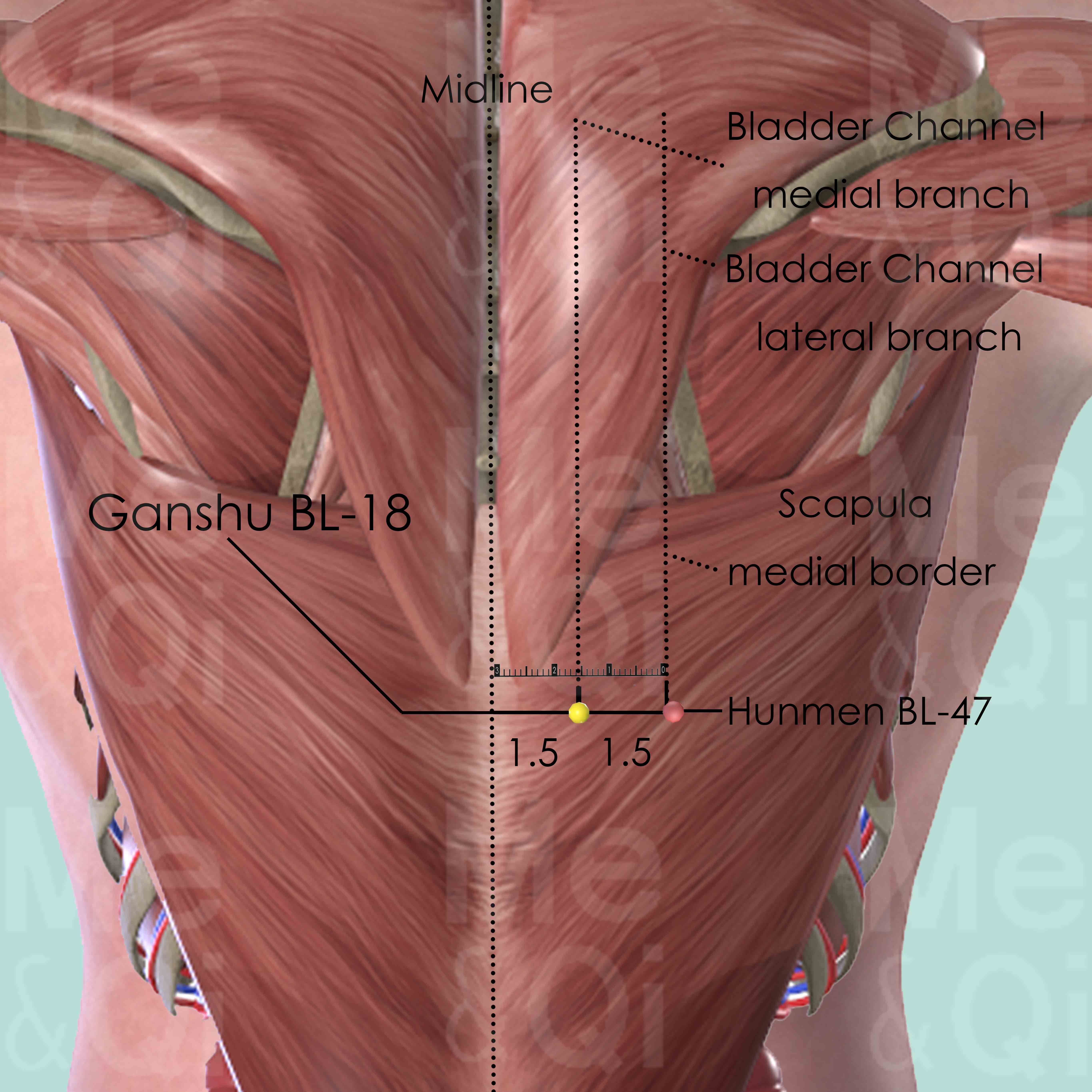
Ganshu BL-18
1.5 cun lateral to the lower border of the spinous process of the 9th thoracic vertebra (T9).
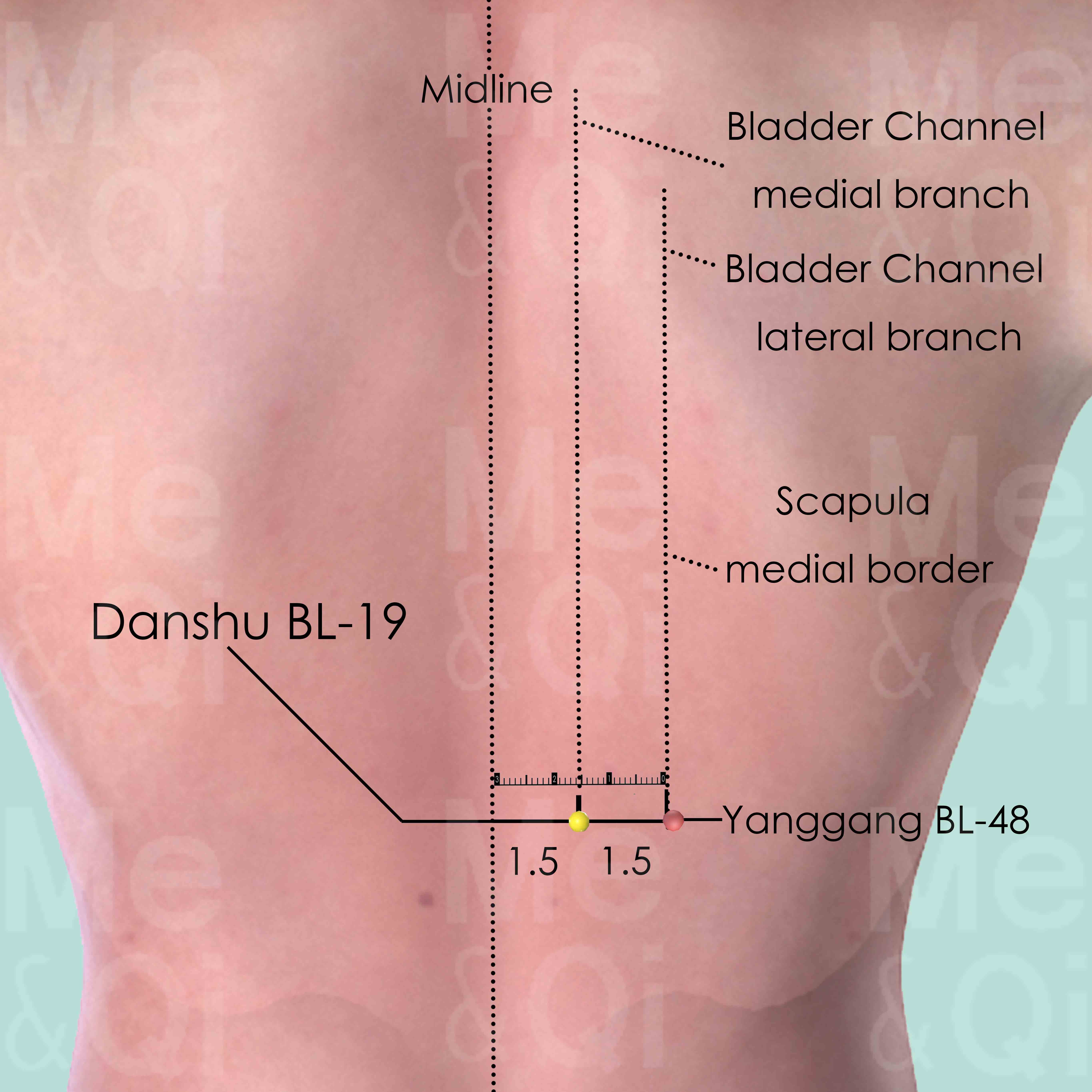
Danshu BL-19
1.5 cun lateral to the lower border of the spinous process of the 10th thoracic vertebra (T10).
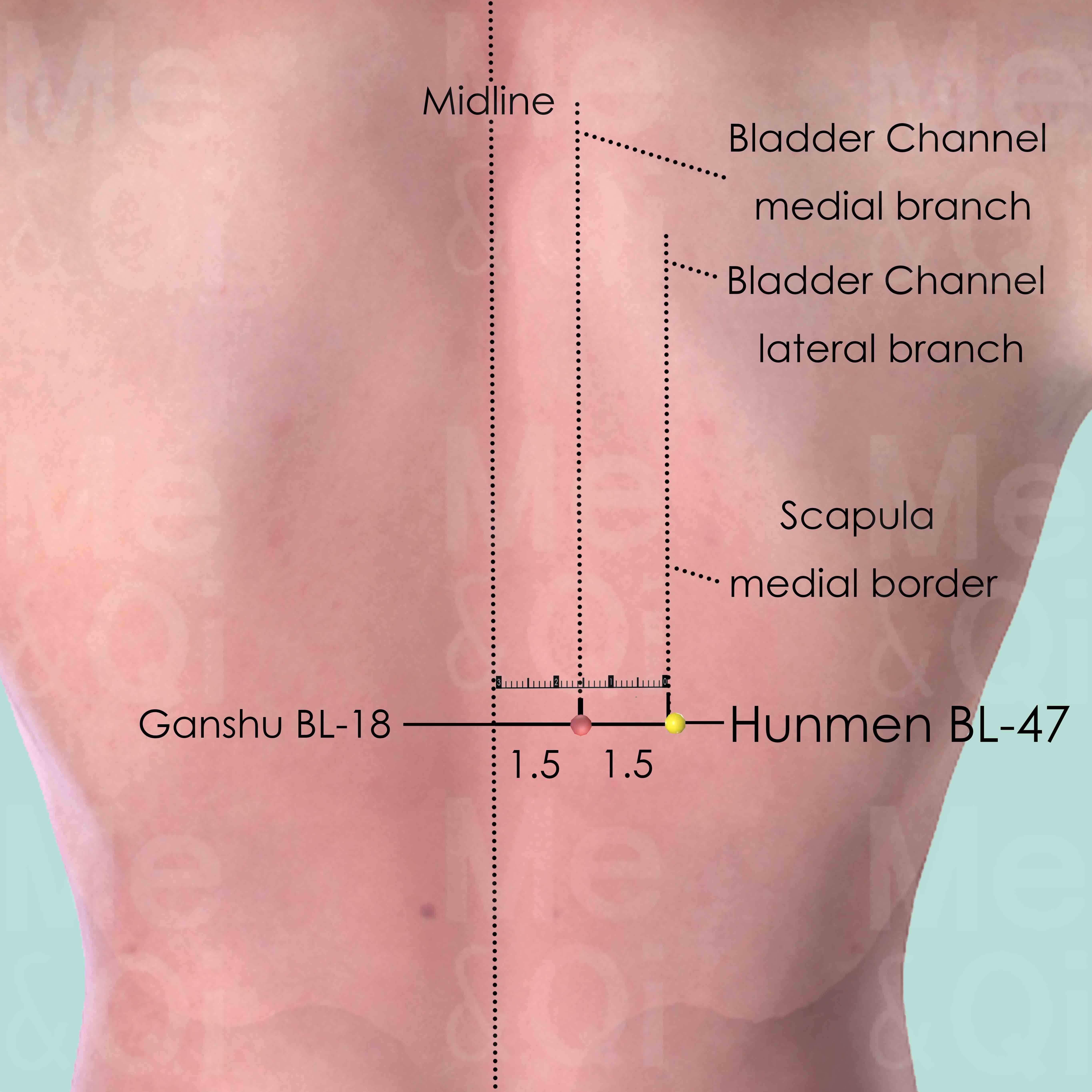
Hunmen BL-47
3 cun (about 4 finger-breadths) lateral to the lower border of the spinous process of the 9th thoracic vertebra (T9).
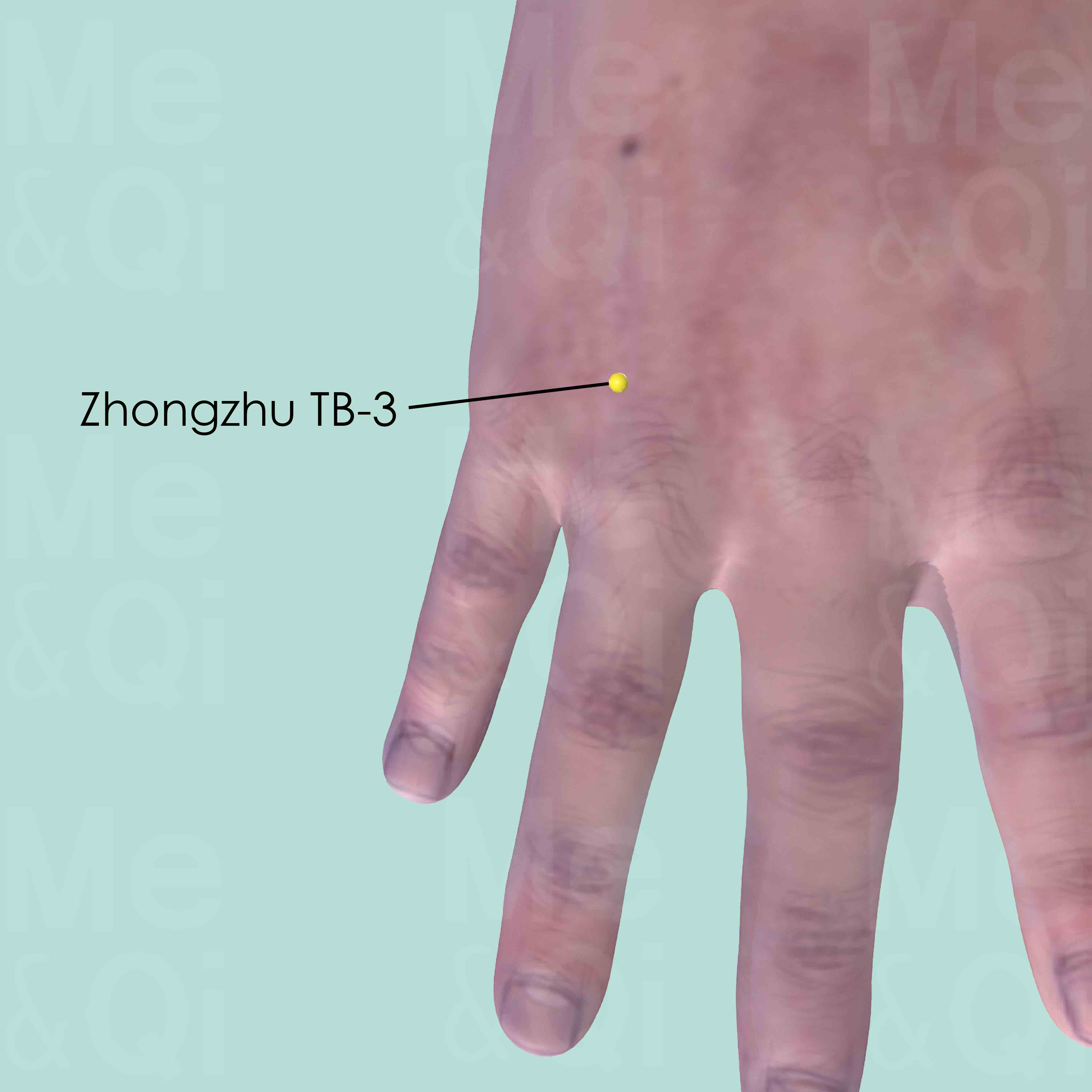
Zhongzhu TB-3
When the hand is placed with the palm facing downward, Zhongzhu TB-3 is on the hand dorsum between the 4th and 5th metacarpal bones, in the depression proximal to the metacarpophalangeal joints, at the junction between the heads and shaft of the two metacarpal bones.
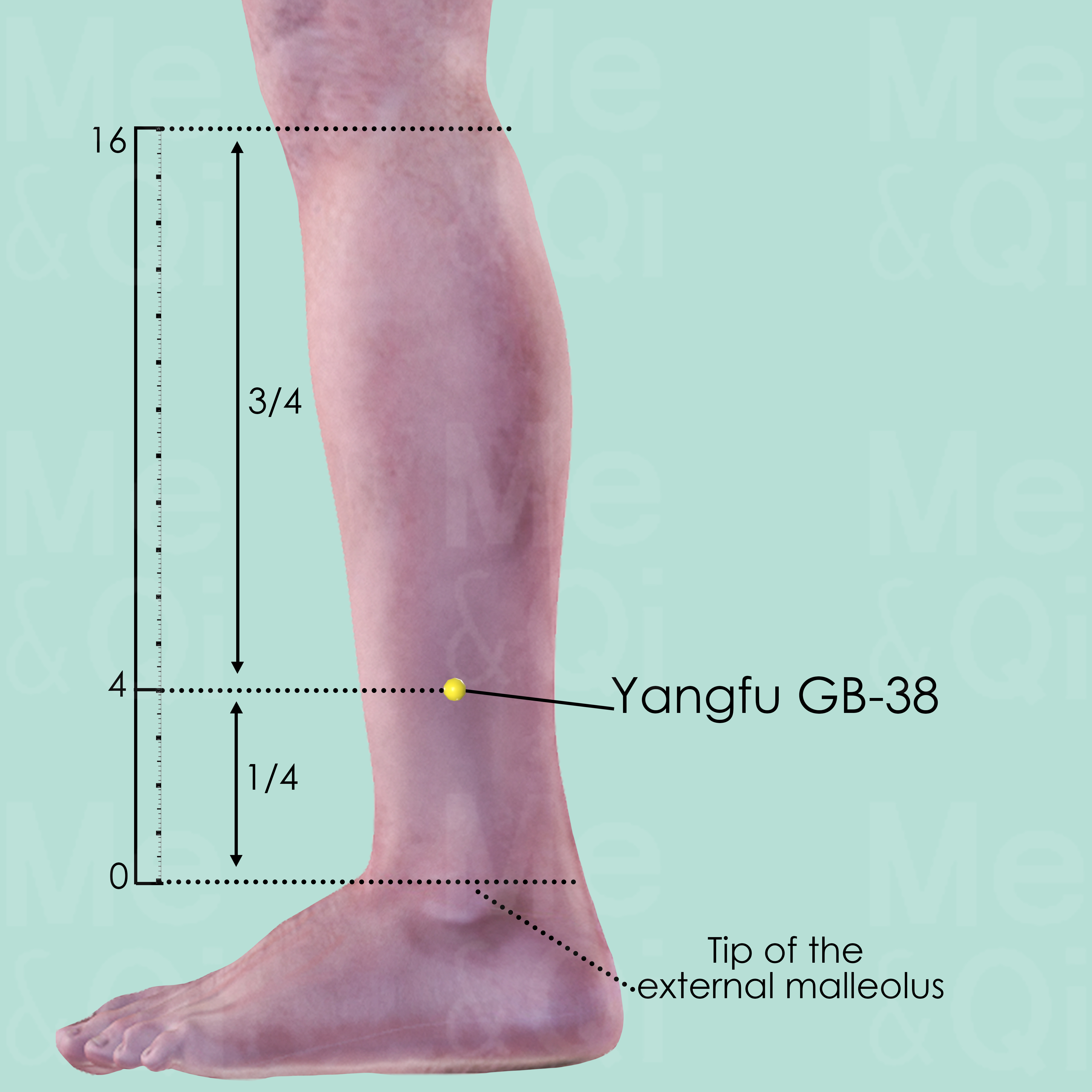
Yangfu GB-38
4 cun above and slightly anterior to the tip of the external malleolus, on the anterior border of the fibula.
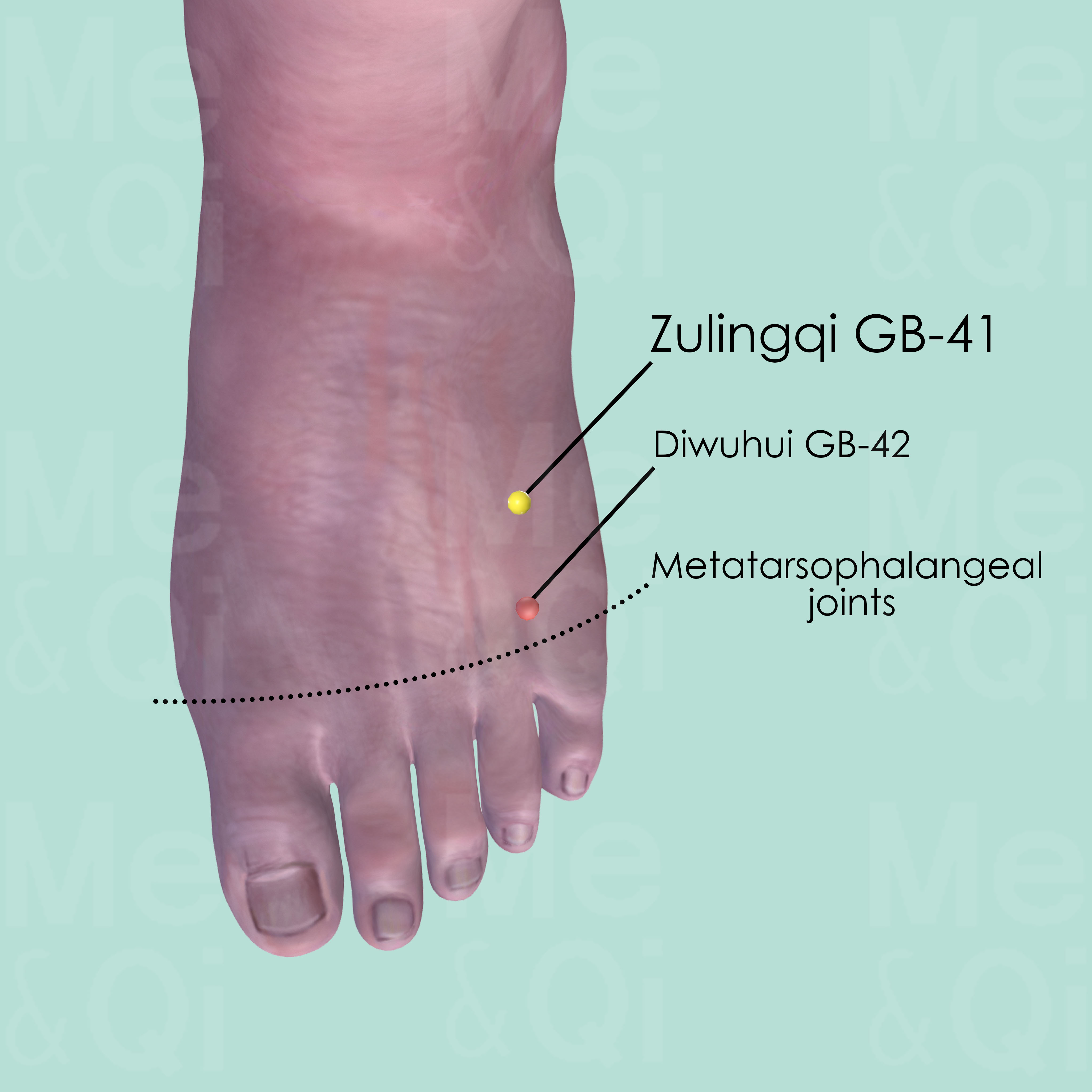
Zulingqi GB-41
In the depression distal to the junction of the 4th and 5th metatarsal bones, on the lateral side of the tendon of extensor digitorum longus muscle of the foot.
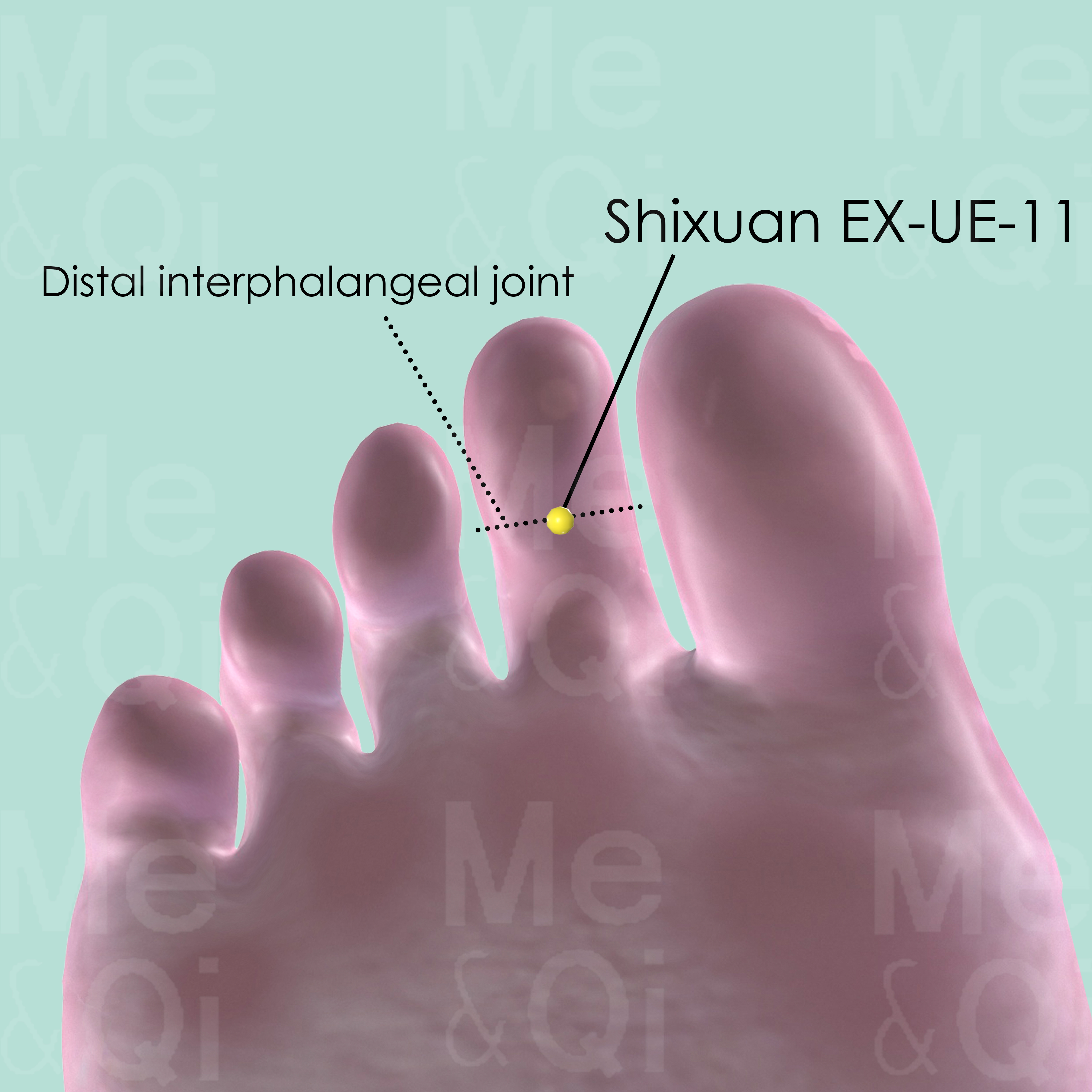
Duyin EX-LE-11
On the plantar aspect of the 2nd toe, at the midpoint of the transverse crease of the distal interphalangeal joint.
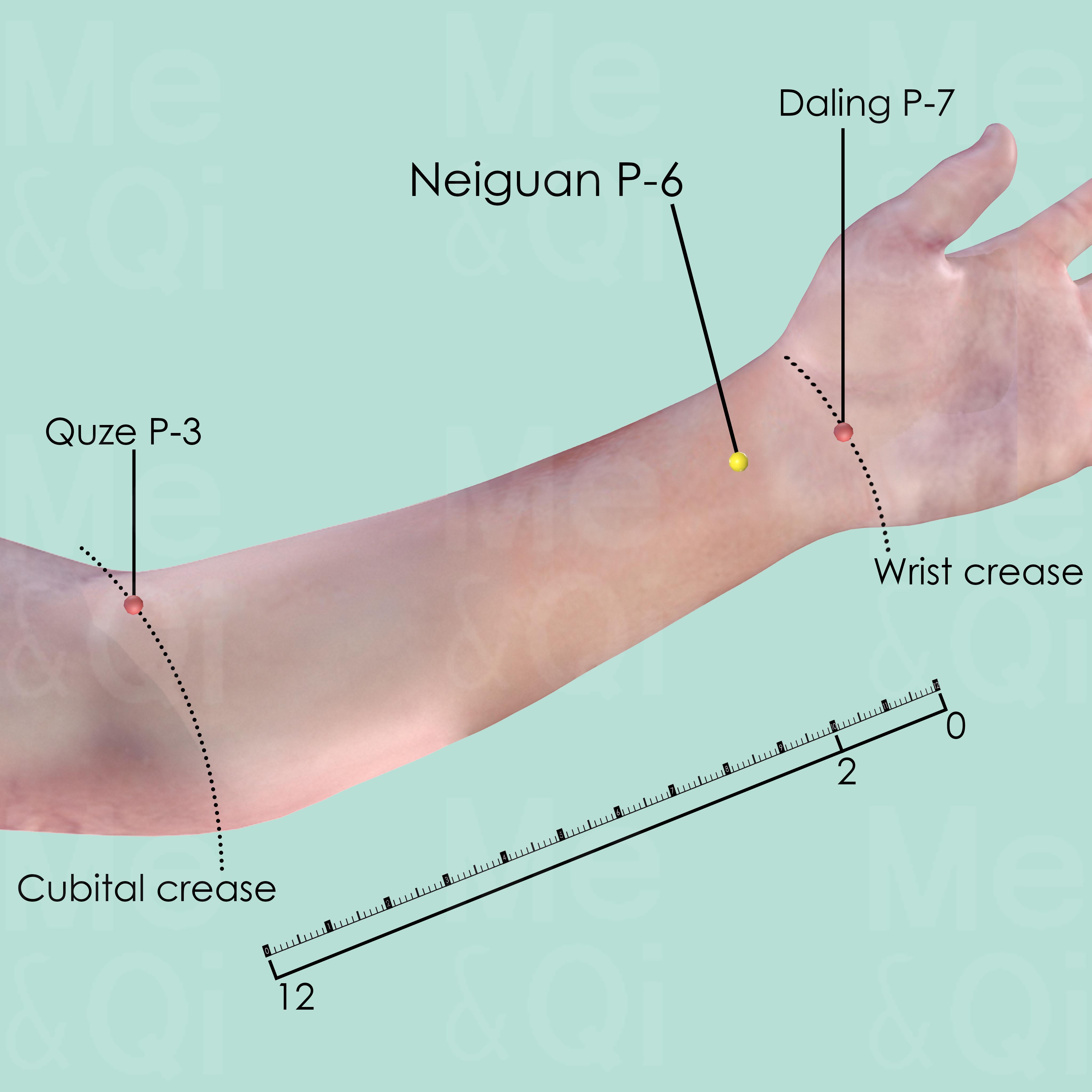
Neiguan P-6
2 cun above Daling P-7 on the transverse crease of the wrist, between the tendons of palmaris longus and flexor carpi radialis muscle.

